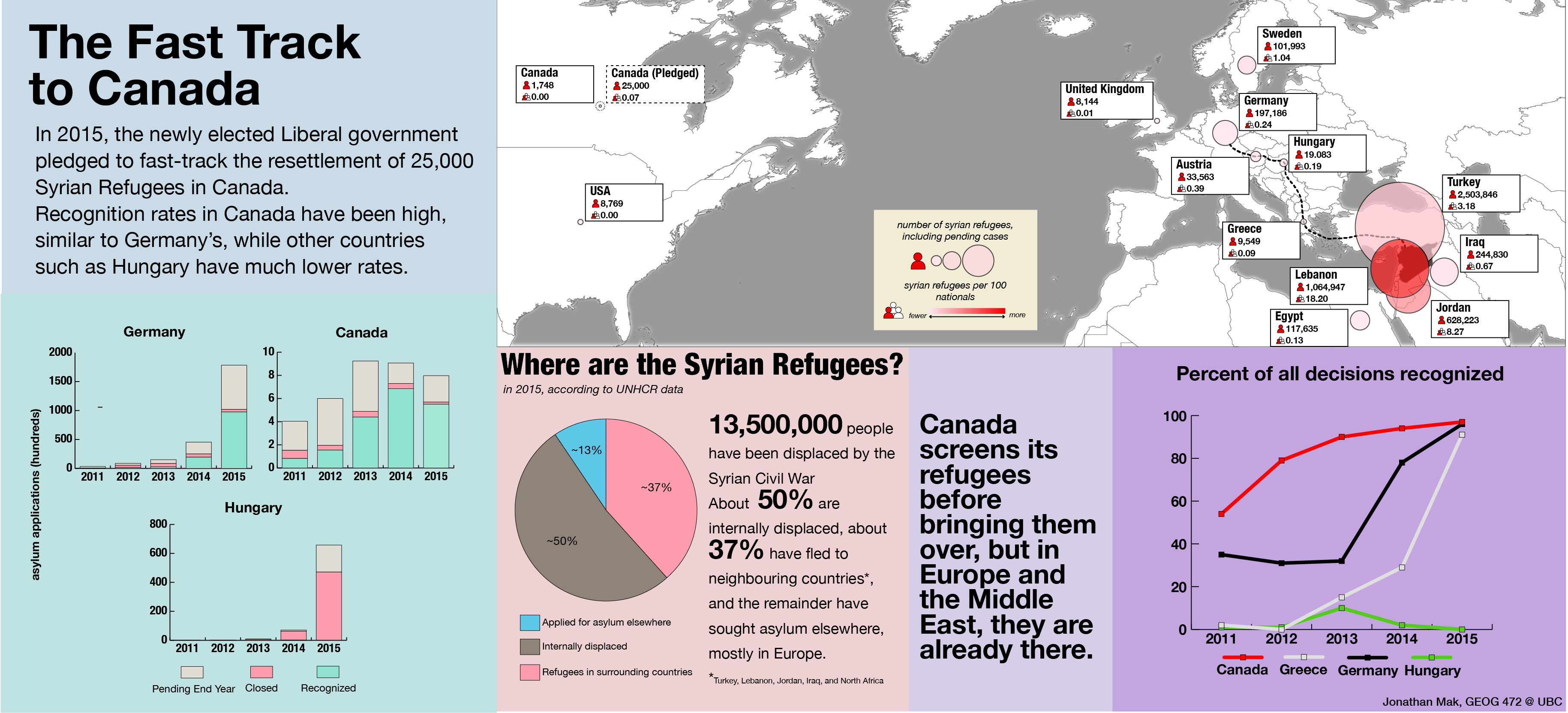The front page interactive visualization of the UNHCR Persons of Concern webpage is effective in its use of an information page to explain the graphic at the start. The information helps guide the user’s eyes to the areas that they can acquire the information to decipher the map.
At first glance, the graphic appears to be quite busy, with many large overlapping circles in the Middle East. However, the zoomability and information on hovering quickly remedies this problem. The proportional pie chart symbols are sized constantly, so as you zoom in, the more space appears between each symbol. By default, each symbol represents total “persons of concern” in each country, including refugees, asylum-seekers, internally displaced persons, returnees, stateless persons, as well as ‘others’. Each of these categories can be toggled on an off as part of each proportional symbol, which is useful in determining the different kinds of “persons of concern” in each region. Below the infographic is an informative text-based legend that further explains each category of “persons of concern”.
This infographic shows the distribution of persons of concern well, and is effective as an overview of their global distribution. The ability to toggle between absolute values and percentage of total persons of concern of each category is also effective in showing that the vast majority of “persons of concern” are internally displaced people in regions of conflict. The infographic conveys its intended message well, with the total number of persons of concern increasing over the years, now being at an all-time-high. The interactive infographic at the bottom is effective in showing which regions have increased in the number of persons in concern. There is no ‘chart junk’ that detracts from the message. However, the infographic does not provide more information about the nature of these populations: their origins, their destinations – it simply serves as a good overview.
